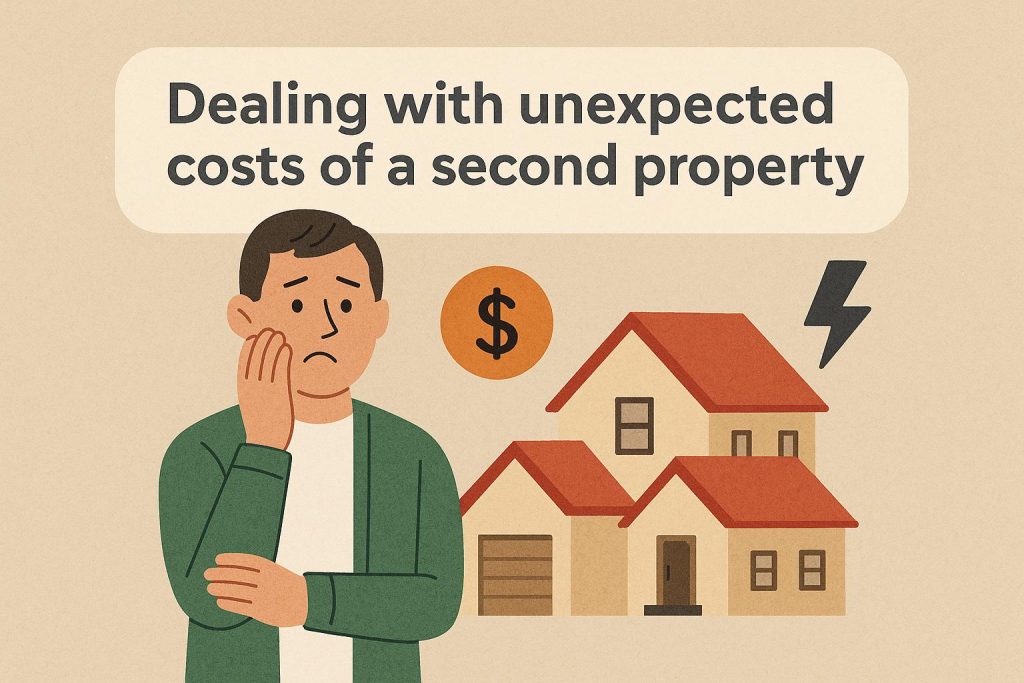Dealing with unexpected costs of a second property

Understanding the Real Costs of Owning a Second Property
Owning a second property can serve different purposes such as an investment opportunity, a getaway for vacations, or even a potential retirement home. While the concept of owning an additional real estate asset might seem enticing, it comes with both predicted and unforeseen financial commitments. Having a thorough understanding of these implications is crucial for making an informed decision.
Initial Purchase Costs
The process of acquiring a second property is reminiscent of purchasing a primary residence as it includes similar initial financial outlays. These include the agreed-upon purchase price and extensive closing costs. Closing costs can encompass various fees such as legal fees, title insurance, and realtor commissions. It is crucial to have a detailed comprehension of these financial obligations to circumvent any unexpected surprises post-purchase.
Property Taxes and Insurance
Ownership of a second home inevitably results in facing additional property taxes. It is essential to conduct thorough research on the property’s location since tax rates can significantly vary depending on the area. Another expense to consider is homeowner’s insurance. Properties intended as vacation homes or those situated in high-risk zones can attract higher insurance premiums. Being aware of these expenses ahead of time equips you to plan more effectively.
Unexpected Maintenance and Repair Costs
Every property requires routine maintenance, but a second home may incur unexpected costs, especially if it isn’t inhabited all year round. It’s prudent to consider continuous maintenance activities such as lawn upkeep, the installation of security systems, and periodic inspections. Additionally, having reserve funds for emergency situations like significant roof repairs or the replacement of household appliances is advised to cushion unexpected financial burdens.
Understanding Mortgage and Financing Terms
The road to financing a second property might present more challenges compared to a primary home. Lenders generally mandate higher down payments for second properties and might offer different mortgage rates. It is advisable to have a thorough understanding of these terms and diligently explore your financing options. A comprehensive grasp of the mortgage and financing landscape can help in strategizing your financial commitments more effectively.
Budget for Utilities and Operating Costs
Utilities such as water, electricity, and gas can significantly add up, particularly if the property is left vacant for extensive periods. It is also essential to account for other operational costs such as Homeowners Association (HOA) fees. HOA fees can be quite substantial in certain communities and should be a part of the budgeting process.
Rental Income and Tax Implications
For those considering renting out their second property, it is significant to assess not only the potential rental income but also the accompanying responsibilities like property management fees and possible tenancy complications. Rental income introduces tax implications which may affect your financial circumstances. Engaging with a tax professional to understand these implications can guide you in aligning the rental income with your financial goals aptly.
Conclusion
The ownership of a second property unfolds a spectrum of opportunities as well as financial responsibilities. By grasping and planning for the diverse costs—predictable and unforeseen—you can ascertain that this investment aligns seamlessly with your financial strategy. Consulting with a financial advisor could prove beneficial in navigating the manifold complexities associated with owning a second property. A prudent approach ensures that this asset not only complements your personal or investment portfolio but also fits optimally within your broader financial blueprint.
